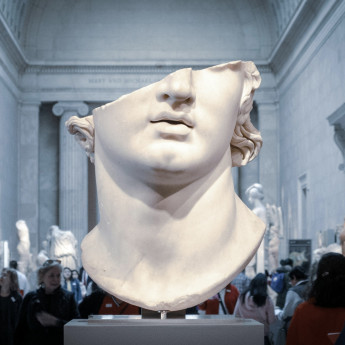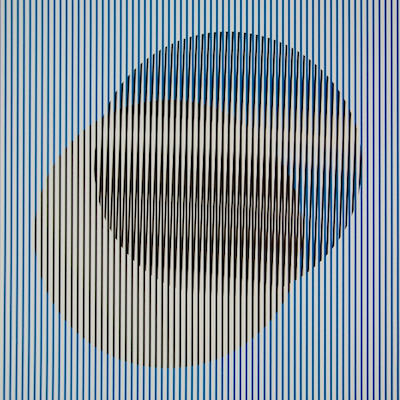


Details
Artist
Styles
From Síntesis Series - Silkscreen on two Plexiglas panels with steel rods - Signed and numbered on a label affixed to the reverse // Rafael Jesus Soto’s Espiral Doble is a captivating mixed-media artwork that plays with optical effects and spatial perception. Part of the Síntesis series, the piece consists of two Plexiglas panels, each featuring a silkscreened spiral pattern that, when viewed together, create a dynamic and immersive visual experience. The overlay of spirals produces an illusion of movement, as if the spirals are shifting or vibrating as the viewer changes their perspective. The use of steel rods to suspend the Plexiglas panels adds depth to the composition, emphasizing the sense of dimensionality and interaction between the patterns. Signed and numbered on the reverse, this work exemplifies Soto’s mastery of kinetic art, where light, form, and viewer perception are central elements.
Espiral Doble, 1979
form
Medium
Size
39 x 39 X 15 cm
- Inches
- Centimeters
Edition
Price
- USD
- EUR
- GBP
Details
Artist
Styles
From Síntesis Series - Silkscreen on two Plexiglas panels with steel rods - Signed and numbered on a label affixed to the reverse // Rafael Jesus Soto’s Espiral Doble is a captivating mixed-media artwork that plays with optical effects and spatial perception. Part of the Síntesis series, the piece consists of two Plexiglas panels, each featuring a silkscreened spiral pattern that, when viewed together, create a dynamic and immersive visual experience. The overlay of spirals produces an illusion of movement, as if the spirals are shifting or vibrating as the viewer changes their perspective. The use of steel rods to suspend the Plexiglas panels adds depth to the composition, emphasizing the sense of dimensionality and interaction between the patterns. Signed and numbered on the reverse, this work exemplifies Soto’s mastery of kinetic art, where light, form, and viewer perception are central elements.
- Recently Added
- Price (low-high )
- Price (high-low )
- Year (low-high )
- Year (high-low )
What is Latin American art?
Latin American Art is a style which takes inspiration from its culture, society, politics, native traditions, religions and landscape. Op-Art and Kinetic Art figure prominently in Latin artworks. Colors in Latin American compositions are often bold. Latin American artists work in all media and movements.






























